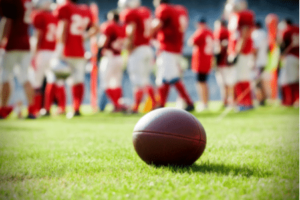 This week, NCAA President Charlie Baker sent a letter to Division I member schools proposing the creation of a new subdivision in which the institutions with the wealthiest athletic programs could directly pay student-athletes for their name, image, and likeness. If accepted, schools in this subdivision—which would likely include institutions like the University of Texas, Ohio State, the University of Georgia, and the like—would have the flexibility to set their own recruiting, roster, transfer, and NIL rules. The NCAA’s letter may be a step toward a “super league” that some commentators believe is inevitable.
This week, NCAA President Charlie Baker sent a letter to Division I member schools proposing the creation of a new subdivision in which the institutions with the wealthiest athletic programs could directly pay student-athletes for their name, image, and likeness. If accepted, schools in this subdivision—which would likely include institutions like the University of Texas, Ohio State, the University of Georgia, and the like—would have the flexibility to set their own recruiting, roster, transfer, and NIL rules. The NCAA’s letter may be a step toward a “super league” that some commentators believe is inevitable.
The letter’s overarching theme is that a single set of rules governing all Division I schools is no longer practicable. Since 2021, the year the NCAA amended its transfer portal rule and the Supreme Court decided NCAA v. Alston, 141 S. Ct. 2141 (2021), the law and economics underlying college athletics have become more and more unsettled, and the legality and practicality of the NCAA’s model has come under increased scrutiny. The letter signals the NCAA’s willingness to consider major policy changes.
In his letter, Baker acknowledged the widening financial gap between the Division I schools with the highest-funded athletic programs and other competitors, which has only grown since the Alston ruling. To counteract this disparity, Baker proposed three changes for consideration of the NCAA’s affiliates.
The first suggested change is to create the possibility for all Division I colleges to discretionarily offer “enhanced educational benefits” to athletes. Baker did not expand upon the meaning of “enhanced educational benefits” or whether these are novel benefits. The second proposal are optional rule changes for Division I institutions to enter into NIL licensing opportunities with athletes. Again, Baker did not elaborate on this suggestion. Baker did, however, deem these two proposals as beneficial to gender equality, considering schools will need to follow gender regulations when contemplating investments in their athletic programs.
As noted above, the final, and most groundbreaking suggestion, is to create a subdivision allowing high revenue institutions to directly compensate athletes “[w]ithin the framework of Title IX.” Members of this subdivision would invest at least $30,000.00 per year into an “enhanced educational trust fund” for half, or greater, of the school’s student-athletes, and also commit to creating rules that differ from the rules affecting all other Division I institutions.
The letter is unclear as to whether the NCAA will abandon efforts to lobby for federal NIL legislation, and there is always the possibility that state governments will take their own actions in response to the NCAA. As ever, the interplay between NCAA policies and state/federal law is dynamic, leaving interested parties with more questions than answers.
